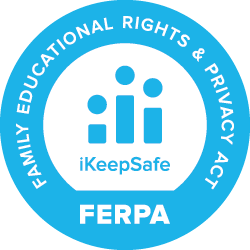Test Your Metal
The properties of a material make them just right for some purposes. In this activity students explore some properties of metals and the challenges of recycling materials that are made from more than one material.
Resource Title:
Test Your Metal
Description:
The properties of a material make them just right for some purposes. In this activity students explore some properties of metals and the challenges of recycling materials that are made from more than one material.
Target Grade Level:
Grades K-4
Discipline or Course (Audience):
Science
Time Frame:
Two 45-minute class periods without extensions
Suggested Grouping:
3-4 students
Educator Preparation and Background:
Most students will know the term “metal” but associate it with a subset of metallic elements, those that chemists call “coinage metals.” This can be an appropriate building block for a broader understanding later. National, state, and local standards ask students to develop an understanding of the properties of matter. The properties of coinage metals— strength, luster, and malleability (the ability to be pounded into shape) and relatively high density make them easy to spot. Many students may also know that metals combine easily with oxygen (rust or corrode), and a few may know they can melt at high temperatures and form alloys. Metals also conduct heat and electricity more readily than non-metals. Many students may have the misconception that all metals are magnetic.
From a chemical standpoint, a metal’s most important property and what puts it in that category is its tendency to give away electrons in a reaction. The metals occupy the left 2/3 of the Periodic Table. While the atomic structure and reactions of metals are not developmentally appropriate topics at the elementary level, it may be appropriate to explain to students that the atomic structure in a metal (the particles they cannot see) are responsible for the substance’s unique properties. Students may also know or discover that not only iron but two other elements in the “iron family,” cobalt and nickel, are magnetic. Again, this is because of their similar atomic structure and electron spin.
- Show students an image of Web Link - Panoramic of Dr. Evermor's Forevertron . Ask them what they see and what they think it is made from. The Forevertron was built in the 1980s by an artist named Tom Every, and is the largest recycled metal sculpture in the world!
- When we think about recycling, we usually think about paper, but the United States recycles nearly 300 billion lbs. of scrap material every year. That’s the weight of more than 85 million cars! Optional: Share some more fun recycling facts about metals from Web Link - ISRI Kids Recycling Facts .
- Ask students how we can tell that the Forevertron is made from metal by looking at the picture – are there certain characteristics or traits?
- Explain that students are going to investigate different materials today and pay special attention to metals and their properties or traits.
Preparation Directions:
- Gather supplies:
- For the 3-4 metal objects per group, examples might be paper clips, eating utensil(s), key chain(s), notebook ring(s).
- For the 3-4 non-metal objects per group, try to get samples representing other recyclable materials like plastic, rubber, paper, etc. Objects might include a piece of fabric, paper, wood (a clothespin), a rubber toy or stopper, a plastic toy, a plastic frosting/decorator nozzle, and a plastic clip from a bread bag.
- For the 3-4 mixed objects per group, choose items or pictures of items with metal and non-metal components, like a dollar bill, a real rubber tire, or a toy with parts made from various materials like a wind-up toy or matchbox car.
- An object, such as aluminum foil, can be shown as a material with one property of metals but not others.
- Collection of coins
- Note cards
- Magnets
Literacy Connection
Gather additional books about King Arthur and CamelotClassifying Objects
- Divide students into teams of 3-4 and lay out the full collection of items on the table for each team.
- You may need to include a discussion of what “classify” means if this is an introduction to this word. Suggest students make at least 3 different groupings and that the objects in each group must share some common characteristics or properties.
- Circulate around the room, offering guidance where needed. A variety of groupings are possible. This should be as open-ended as possible.
- Discuss characteristic properties (distinguishing an item from other items; properties that can be used to identify an object).
- Discuss examples. Share with students that today they are going to be discussing metals, and their characteristic properties.
- Have students conduct activity.
Properties of Metal
- Show students the pile of coins.
- Ask students what they are made of (metal).
- Challenge students to list characteristics they believe are properties of all metals on an index card.
- What makes a metal a metal?
- Discuss some categories like color – does color always help identify an object?
- Are all metals gray in color, for example?
- Introduce the categories:
- luster (shininess)
- tensile strength (metals are strong and can carry large loads before breaking)
- malleability (metals can pounded or bent into shapes, often through heating)
- density (if appropriate to the student group).
- Discuss that metals also conduct electricity, whereas objects like plastic or rubber do not (optional: use a diode, batteries, and wires to demonstrate this).
- Some metals are also magnetic – but not all.
- Demonstrate with a magnet. These are called “ferrous” metals, from the Latin name for iron, the metal that is most strongly magnetic.
- Review the attraction of a magnet to something steel in your classroom.
- Ferrous metals also tend to rust (cobalt and nickel are the other magnetic elements).
- Ask students to consider where metals come from (mines). If your school is near a mining area, help students relate to its location.
- Discuss that the earliest uses of metal were for weapons and cooking implements. They were hard and strong. When heated, their shape could be changed. Their use was so important and changed human life so much that we define eras of human existence by the metals they used, the “Bronze Age” and the “Iron Age.”
- Today, materials engineers can make some synthetic products with some of the properties of metals.
- For older students, it may also be appropriate to explain to students that many metals are mixed. These alloys have special properties. Heating and cooling metals in special ways can also change their properties. For example, forging iron can make it stronger, less brittle and more corrosion-resistant. This is described in the passage about King Arthur. More exploration of alloys can be found in the ISRI lesson Smash Science . Grace, can you confirm that this code is correct--it does not show up in the preview.
- Scavenger Hunt: Have students identify and collect other items made from metals in the classroom or school. Once back in class, this “scavenger hunt” results can be compiled on a board or chart.
- As students discuss other purposes for metals, show some images of products and/or artwork made from recycled metals.
Remote Learning Adaptations:
This activity is not appropriate for remote learning.
STUDENT CONTENT BELOW
Did you know that the United States recycles over 250 billion pounds of scrap metal yearly? This is the weight of more than 70 million cars! In fact, steel is the most recycled material worldwide. Metal from old cars, farm equipment, railroad tracks, aluminum cans, airplane parts, and more can be recycled for use in new structures like roads and bridges, new cars, and even cooking supplies. In this activity, you will discover the traits or characteristics of metals and use those traits to sort or classify different items. You will use those traits to explain why metals are used for specific purposes.
Materials:
- Device with internet access
- Collections of coins
- 3-4 metal objects per group
- 3-4 non-metal objects per group
- 3-4 mixed objects (items that have metal and non-metal components)
- aluminum foil
- Note cards
- Magnets
Safety Notes:
- When using technology, engage in safe, legal, and ethical behavior; this applies to devices (hardware), applications or programs (software), and interactions with others.
- There are no anticipated physical safety risks associated with this Activity.
Classify Objects
- With your team, sort the objects your teacher has provided you with into different groups so that objects with similar traits are grouped.
- List the traits or properties of each group on separate index cards.
- Share ideas with your class.
Properties of Metals
Figure 1: A group of coins.
- Observe the pile of coins.
- List characteristics you believe are properties of all metals on an index card.
- What makes a metal a metal?
- What makes metals different from other objects?
- Look at your collection of items.
- Which of these items are metals?
Let's Mix It Up
- Create new groupings to sort the metals from the non-metals.
- Do the materials feel cold to the touch?
- Is the material shiny or dull?
- What kind of sound does it make when tapped?
- Do some items contain a mix of metal and non-metal materials?
Let's Test It!
- Using a magnet, test each metal object to find out if they are magnetic or “ferrous” metals.
Think About It
- Make a list of the many things you can think of that are made from metal.
- What traits make metals ideal for these purposes?
- Can you think of anything that might be made from recycled metal?
Search for Metals
- Create a list of the characteristic properties of metals on a note card.
- Search for metals in your classroom or elsewhere in the school as directed by your teacher.
- Collect objects or take pictures of what you've found as directed by your teacher.
- If you were able to collect objects:
- Test the items you collected to see if they are magnetic. Caution: Ensure students do not put magnets near computer or television screens or computer equipment).
- Share results with others
- How many metals did you find?
- Were any metals hidden in other substances?
- Were some of the metals magnetic? Which ones?
Reflect and Apply
- List 3-4 characteristics of metal. (shiny, strong, shapeable or malleable, heavy/dense).
- Explain why metal might be used to make certain objects. Metals are often hidden in other products like tires or US currency to make them stronger; to make objects look shiny like in jewelry or sculptures; objects that need specific shapes and need to be bendable like a paperclip.
Let's Learn About Metal
When metal is recycled, it must be separated from other materials. For example, car tires contain rubber. But they also include metal and fabric. Steel wires are inside the tire to make it stronger, and strips of cloth are in the rubber on the sides. Imagine you want to recycle all the products in a tire. Can you think of some ways metal might be separated from other materials based on its properties? Create a table that lists the 3-4 characteristics of metal and how those traits might be used to help in the separation process.
Journal Question:
What are some things people could do with old items that contain metal instead of throwing them away in the trash?
The Legend of King Arthur
You may have heard the legend of King Arthur and his “magic” sword, Excalibur. There are many legends about swords. Some legends come from the time when humans learned to make stronger metals. They made weapons that seemed truly magical to enemies. Read “The Legend of King Arthur” and answer the questions. Arthurian legends date to about 300-400 AD. Use the Internet to find out what kinds of metals were used for tools in those days and how they were made.
According to legend, King Arthur led a band of knights. He defended his town from invaders with a magic sword called Excalibur.
Could a sword be magic? Think about how swords were made in those times. First, the iron ore had to be mined. There were no machines to help. Men had to hammer and chisel the ore from caves. Then they had to chip away the rock that wasn’t iron.
Iron ore is brittle and hard to shape. At that time, special craftsmen called Smiths made swords. They used heat from a special oven called a forge to harden the iron into steel. They had to know just how hot to make the forge and how long to leave the iron in the heat. They had to quench (cool) the sword with water at just the right time. Forging swords was a special craft. Smiths kept their methods secret, just like magicians.
In the Middle Ages, metal tools were very valuable. No one would ever imagine using a metal object for a short time and then throwing it away! They handed tools down to their children and even used them as “money" to barter for what they needed. Metal objects were recycled over and over, in one form or another.
Another legend about King Arthur tells the story of how Excalibur was lost at the bottom of a lake. The metal was too valuable to leave there, but eventually, the sword was found and used again.
Today, we know more about metallurgy. That’s the science of making and changing metal. We understand how iron becomes steel. First, the iron must be separated from other minerals in the rock that can’t be seen. Limestone is used to remove these other minerals. They fall to the bottom of the forge. Then, the element sulfur must be removed from the ore. The elements phosphorus and silicon must also be removed. Carbon is added to the iron to make it stronger and more malleable (able to be pounded into a shape).
Iron can be combined (alloyed) with other elements like chromium to help it resist rusting (corrosion). Alloys like titanium steel can be used to make replacement joints for humans or parts for spaceships.
Think About Metals
In your journal or in a discussion with a small group or partner, answer the following questions:
- What is a legend? An old story that might have some truth in it.
- Where do we find metals? Almost always under the ground.
- Are the metals ready to use when we find them? Not usually; they are almost always ores.
- Why did medieval people think that making swords was magic? The steps were very complex and kept secret by the smiths.
- What is needed to make useful metal objects? Heat, pressure, and other elements like limestone and carbon in very special order.
- What are alloys? Mixtures of metals.
- Why should metals be reused? They are hard to find, hard to refine, and very valuable. It takes a great deal of energy to find and refine them.
Extension:
Create a picture with labels showcasing what we might do with old items that contain metal instead of throwing them away in the trash.

.jpg)




